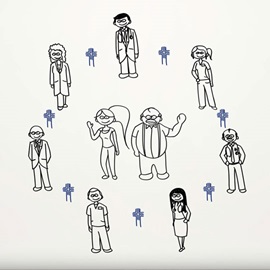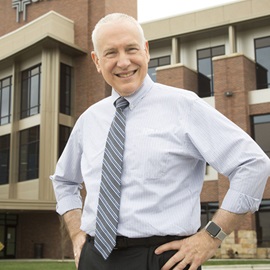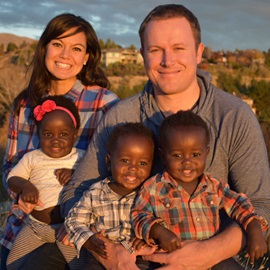Dr. Pate’s Prescription for Change
St. Luke’s Dr. Pate looks ahead to 2025
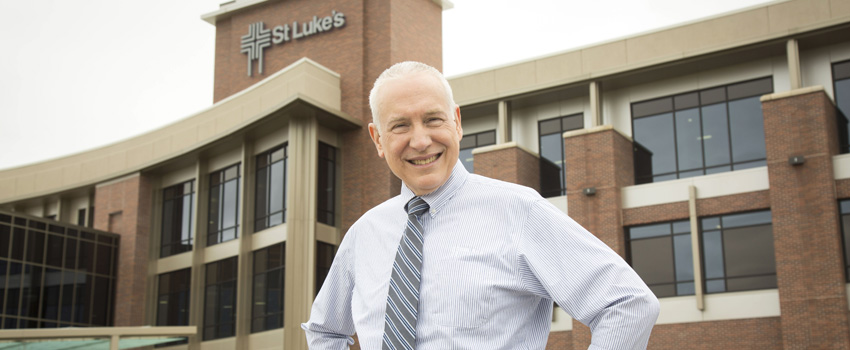
Editor’s note: This is the first of a two-part series.
For the past several years, St. Luke’s Health System has been following Strategy 2020, the strategic framework that has allowed us to organize our efforts around population health, our St. Luke’s Health Partners network and community health.
Next year, we will be finalizing Strategy 2025, our next strategic plan. To be ready, we have been doing an environmental assessment and thinking about all the changes we anticipate in the next seven years. Here are some of my thoughts and concerns as we move through our planning.
Demographics
There will be significant growth in Idaho and in our service area, and when we break it down by age group and look at the region with the greatest growth – the Treasure Valley – we see some challenges.
First of all, the age group with the fastest growth is the over-65 cohort, with a projected 26 percent growth between 2017 and 2023 and 21.9 percent growth between 2024 and 2028.
That has very significant implications for us. It will affect our payer mix, with increased volume in traditional Medicare and Medicare Advantage.
And there will be significant challenges caring for an aging population. We have few geriatricians, few extensivists and almost no geriatric psychiatrists. As only one example of what the changing needs will be, there is a 44 percent increase in Alzheimer’s disease predicted to occur by 2025.
Finally, as we look at St. Luke’s employees aging out of the workforce and how to replace them, I note that there is a predicted 3.5 percent growth in the population of those ages 45 – 64 from 2017 to 2023 and 2.9 percent growth in this age group between 2024 and 2028.
Economy
We are at the lowest jobless rate in almost 50 years. That has resulted in increased wages, but at the same time, increased wages lead to increased prices (inflation). And although unemployment is low, a lot of the employment is in part-time work, which is underemployment, and a lot is in lower-paying retail and food service industry jobs. In health care, we don’t have enough people going into the jobs we need to fill – physicians, nurses and technical careers.
Though the economy is strong (low unemployment, GDP growth in the ideal range), there are worrisome signs, including:
- An increase in inflation. The fed recently increased rates again and anticipates doing so again this year.
- Nine years of GDP growth, leading many economists to conclude that we are due for a recession in the next two to three years.
- The cost of health care, which is too high and still growing too fast.
- Personal debt, which is at record highs.
- Federal deficit spending, which is approaching levels seen during the Great Recession, even though we are in a time of economic expansion.
Finally, though changes in the economy can impact this date significantly, the Medicare Trust Fund is projected to run out in 2026 and Social Security could be depleted by 2034.
Health care and social care spending
Health care spending as a percent of GDP in the U.S. is 50 percent to 100 percent greater than in other economically developed countries. What is intriguing is that when you combine health care spending with spending on social care programs, the U.S. falls in the middle of the pack of the countries included in the Organisation for Economic Co-operation and Development.
That raises some interesting questions. How much of the health care spending in the U.S. could be avoided by better funded social programs? This has implications for our community health efforts. Another question is whether the lack of social care spending and resultant health care disparities in the U.S. explain why our health care outcomes lag behind other countries.
Political
Here in Idaho, we are watching for the ballot initiative on Medicaid expansion in November. Public polling seems to suggest that it will pass. The question then is what our state legislature will do.
On the national scene, between now and 2025, we will have had two midterm and two presidential elections. We are watching the 2018 midterms to see whether Democrats gain control of either or both bodies of Congress.
If history is a predictor of the future, we will have a Democratic president in either 2020 or 2024. If Democrats control the White House and Congress, then we are in for some potentially major changes relating to health care.
There is a movement within Democratic circles to expand coverage and move towards more universal coverage than was achieved with the ACA. This discussion has taken the form of single-payer, and specifically various “Medicare for all” proposals; efforts at universal health care legislation in the states have failed thus far when governors or the voters have become aware of the increase in taxes necessary to fund such coverage. And because single-payer health care is an existential threat to insurance companies and other health care industries, lobbying against it will be fierce. Today, most hospitals and physician practices could not survive if all of their business was paid at Medicare rates.
But before we dismiss the possibility of universal and/or single-payer health care, there is the 2026 date projected for the Medicare Trust Fund to go bust to keep in mind. The electorate will not tolerate the loss of Medicare, so there will be intense pressure for legislators to do something. If Obamacare was not the answer, and if premiums continue to soar under the Republican administration, voters may be more receptive to radical changes than they have been in the past.
Next week, I will take a look at the health ecosystem, how it is changing and how it may change by 2025.
About The Author
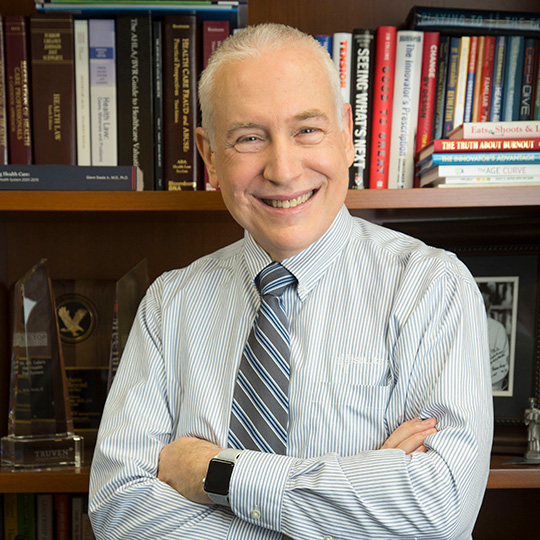
David C. Pate, M.D., J.D., previously served as president and CEO of St. Luke's Health System, based in Boise, Idaho. Dr. Pate joined the System in 2009 and retired in 2020. He received his medical degree from Baylor College of Medicine in Houston and his law degree from the University of Houston Law Center.


